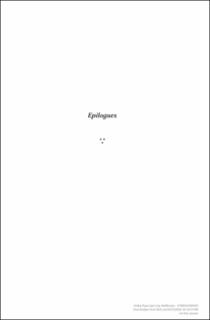| dc.contributor.author | Steffensen, Lisa | |
| dc.contributor.author | Ryan, Ulrika | |
| dc.date.accessioned | 2022-04-25T09:21:19Z | |
| dc.date.available | 2022-04-25T09:21:19Z | |
| dc.date.created | 2022-04-23T06:39:31Z | |
| dc.date.issued | 2021 | |
| dc.identifier.citation | Ryan, U., & Steffensen, L. (2021). From the present towards hope for the future. In A. Andersson & R. Barwell (Eds.), Applying critical mathematics education (pp. 231–239). Brill. | en_US |
| dc.identifier.isbn | 978-90-04-46580-0 | |
| dc.identifier.uri | https://hdl.handle.net/11250/2992451 | |
| dc.description.abstract | The title of this volume is Applying Critical Mathematics Education. Initially, we thought of applying as “putting into action.” We considered the notion of action and its connectedness to hope for the future. If there is no future, there is no notion of action: we act because we have hopes for tomorrow. The relationship between hope and action raises questions about what kinds of acts and, perhaps, hopes the word “apply” connotes. As emergent writers and speakers of academic English, we sometimes turn to thesauri to grasp embedded meanings in English words. We looked up the word “apply” and learned that apart from “putting into action,” it is also related to the following ideas: to work hard at, to pay close attention to, to have relevance for and to request something (Cambridge Dictionary Online, n.d.). Hence, applying critical mathematics education may imply acting by being relational and dedicated, by addressing relevant issues and by making demands. Drawing on our understanding of the meaning of “apply,” therefore, we think of being relational and dedicated as a matter of enhancing situated critical awareness. We think of addressing relevant issues as a matter of highlighting complex global and local challenges. We think of making demands as a matter of agency and power. Hence, we have organised our text in three main parts according to this logic. In doing so, we connect the ideas and concepts brought forward in the book to unpack the lessons we learned from our reading and the hopes that our reading gave us. In the last part of this epilogue, we direct our gaze at future concerns for critical mathematics education in the context of issues that we, Ulrika and Lisa, have at heart. We follow Andersson and Wagner (this volume) who suggested synthesising critical mathematics education and ethnomathematics. Hence, when we write critical mathematics education, we refer to their synthesised meaning. | en_US |
| dc.language.iso | eng | en_US |
| dc.publisher | Brill | en_US |
| dc.relation.ispartof | Applying Critical Mathematics Education | |
| dc.rights | Navngivelse 4.0 Internasjonal | * |
| dc.rights.uri | http://creativecommons.org/licenses/by/4.0/deed.no | * |
| dc.title | From the Present towards Hope for the Future | en_US |
| dc.type | Chapter | en_US |
| dc.description.version | publishedVersion | en_US |
| dc.rights.holder | © Ulrika Ryan and Lisa Steffensen, 2021 | en_US |
| dc.source.pagenumber | 231-239 | en_US |
| dc.identifier.doi | 10.1163/9789004465800_011 | |
| dc.identifier.cristin | 2018565 | |
| cristin.ispublished | true | |
| cristin.fulltext | original | |
| cristin.qualitycode | 2 | |

